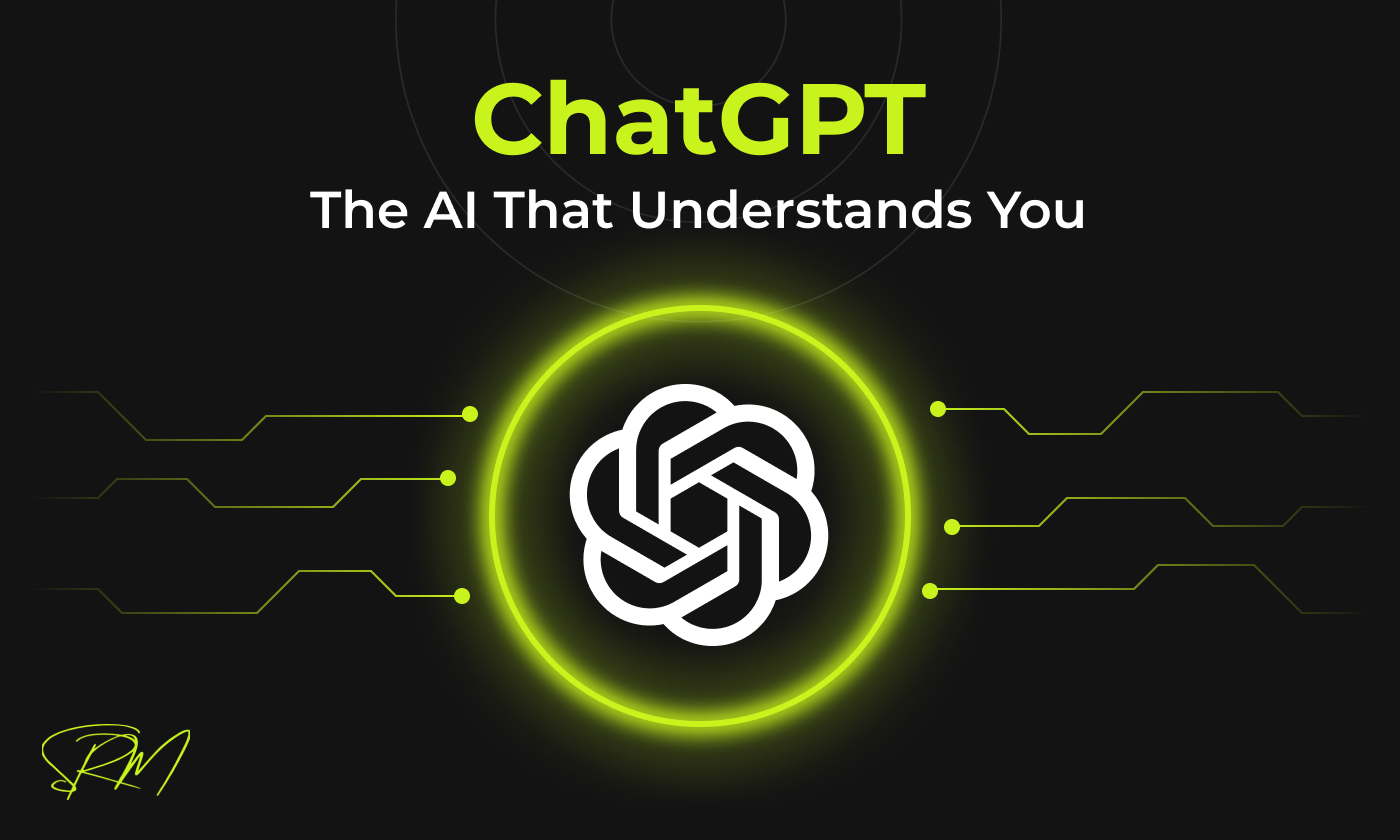
Artificial intelligence (AI) is changing the way we interact with technology, and one of the coolest advancements is about ChatGPT. ChatGPT is an AI that can talk to people, understand what they say, and respond in a way that feels natural. It can answer questions, have conversations, and even help create content, making it a useful tool for many different jobs.
Did you know? ChatGPT is now being used by students, marketers, teachers, and business owners to speed up daily tasks, boost creativity, and even build websites — all through natural conversation.
How Conversations with AI Have Evolved
AI in conversations has come a long way. In the past, chatbots could only respond with simple answers or follow set rules, but ChatGPT is much smarter. Thanks to improvements in how computers understand language, AI can now have more complex and meaningful conversations. This is making things like customer service, learning, and content creation much better. As AI gets even better, it’s exciting to think about how conversations with AI will continue to improve.
Fun fact: ChatGPT is built on powerful language models like GPT-4, which is trained on billions of words from the internet, making it one of the most advanced conversational AIs ever created.
How ChatGPT Works
ChatGPT works by using smart technology to understand and respond to what people say. It uses two main ideas: Natural Language Processing (NLP) and Machine Learning (ML). NLP helps the AI understand human language, and ML helps it learn and get better over time. These two work together to allow ChatGPT to have conversations and answer questions like a real person.
- The Technology Behind ChatGPT: ChatGPT is based on a model called GPT, which learns from lots of text to give helpful and relevant answers.
- Natural Language Processing and Machine Learning: NLP helps ChatGPT understand the meaning behind words, while ML allows it to keep improving based on what it learns from new data.
SEO tip: By using NLP, ChatGPT can help identify trending keywords and optimize content—perfect for digital marketers and content creators!
Key Features of ChatGPT
About ChatGPT, one of the coolest things it can do is understand and talk like a human. It can listen to what you say and respond in a way that makes sense. ChatGPT can keep a conversation going, remember what was said earlier, and switch topics easily. It also works in different languages, so people from all over the world can use it.
- Multi-language Support: Talk to ChatGPT in English, Spanish, Hindi, French, and more.
- Content Brainstorming: Instantly get blog ideas, outlines, and social media captions.
- Coding Help: Need help writing code? ChatGPT can assist with Python, HTML, JavaScript, and beyond!
Whether you’re asking questions or just having a chat, ChatGPT is really good at making the conversation feel smooth and natural.
Applications of ChatGPT
ChatGPT can be used in many different areas. In customer service, it helps answer questions and solve problems quickly, making customers happy. For people who create content, ChatGPT can help write blog posts, social media updates, and even scripts, saving them a lot of time. It’s also really useful in marketing and SEO, helping businesses improve their content and connect with customers better.
- ChatGPT in Customer Service: It answers customer questions quickly, making support faster.
- ChatGPT for Content Creation: It helps creators write articles, posts, and more, making their work easier
- Using ChatGPT for Marketing and SEO: It helps businesses make better content and improve their SEO marketing strategies.
Pro tip: Businesses using ChatGPT report up to 40% faster content production and improved Google rankings due to keyword-optimized writing.
The Role of ChatGPT in Future AI Conversation
ChatGPT is playing a big part in how we will talk to machines in the future. It’s making conversations with AI feel more natural, like talking to a real person. As technology keeps getting better, ChatGPT will help create smoother, more interesting talks for things like customer support, virtual assistants, and even entertainment.
Emerging trend: AI companions powered by ChatGPT are being used in wellness apps, language learning platforms, and education tools.
ChatGPT will also change virtual assistants and chatbots. These AI systems will become better at understanding what you say and giving more helpful answers.
Benefits of Using ChatGPT
About ChatGPT, it has a lot of benefits that make it helpful for both businesses and users. One big advantage is saving time and money. ChatGPT can do tasks like answering questions or creating content, which helps businesses get more done without spending a lot of money.
- Time and Cost Efficiency: ChatGPT saves time and money by quickly handling tasks that would take longer for people to do.
- Improved User Experience and Engagement: ChatGPT makes conversations feel more natural and interesting, keeping users engage
New benefit: You can even automate routine emails, FAQs, and customer onboarding with ChatGPT, giving your team more time to focus on high-level tasks.
Challenges and Limitations of ChatGPT
Even though ChatGPT is very useful, there are some problems and limits. One big issue is privacy and ethics. Since AI like this uses lots of data, people worry about how it handles personal information. Another problem is that ChatGPT doesn’t always understand everything perfectly.
It can sometimes miss the deeper meaning or context of a conversation, which means it might not always give the best answers. These issues show that AI needs to be used carefully and improved over time.
Responsible use: Always double-check AI-generated content and avoid sharing sensitive data during conversations with AI.
ChatGPT vs Other AI Technologies
Traditional chatbots can only give simple, pre-written answers based on set rules. But about ChatGPT, it uses advanced technology to understand what you mean and reply more naturally, like a real conversation. This makes ChatGPT able to talk about many different topics and give better answers than traditional chatbots.
- Comparison with Traditional Chatbots: Traditional chatbots just follow basic rules, while ChatGPT can understand and respond like a real person.
- What Makes ChatGPT Unique?: ChatGPT is smarter because it learns from a lot of data and can handle different topics, making it more flexible than other AI systems.
The Future of ChatGPT
The future of ChatGPT looks really exciting as AI keeps getting better. People think AI will soon be able to understand human feelings better and know more about what we mean. ChatGPT could become even more personal, giving more accurate answers based on what each person needs.
Future-ready: With plugins, voice chat, and image input on the rise, ChatGPT is evolving beyond just text.
We might also see improvements like better support for different languages, faster responses, and the ability to work with more platforms, making it even more useful.
Final Thoughts
The way we talk to machines is changing, and about ChatGPT, it’s helping make that happen. ChatGPT can understand what we say and reply in a more natural way, which makes it special. As AI gets smarter, ChatGPT will keep improving, making things like customer service and content creation easier. The future of talking to AI looks exciting, and it will help businesses and people use technology in a better way every day.
FAQs About ChatGPT
Q1: Is ChatGPT free to use?
Yes, there’s a free version, but premium plans like ChatGPT Plus give access to GPT-4 and other features.
Q2: Can ChatGPT write code?
Absolutely. Developers use it to write and debug code faster.
Q3: Is ChatGPT safe to use for business?
Yes, but sensitive information should be handled with care, just like with any digital tool.
Q4: What are the limitations of ChatGPT?
ChatGPT sometimes gives wrong answers, misunderstands complex questions, or sounds too confident even when it’s wrong. It also doesn’t know real-time news unless connected to the web.
Q5: How accurate is ChatGPT?
ChatGPT gives mostly accurate answers, but it can still make mistakes or provide outdated information. It’s best used as a helper, not a final source.





